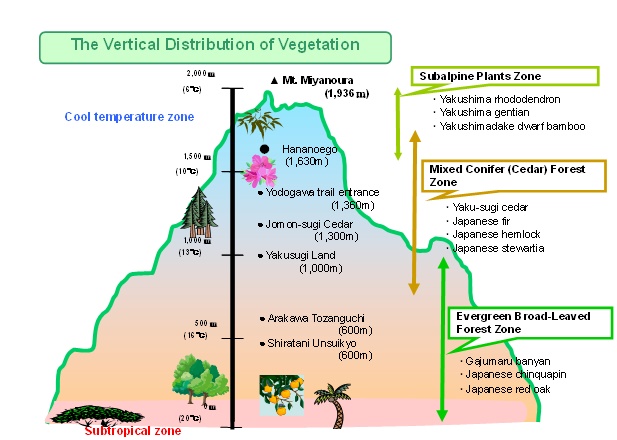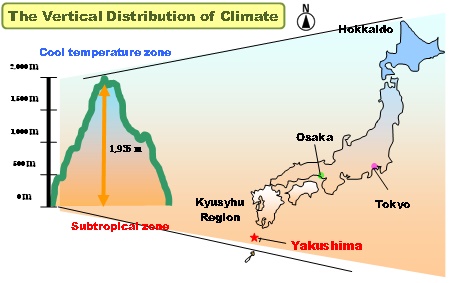World Natural Heritage site on Yakushima
|
ー World Natural Heritage site on Yakushima ー
Yakushima is a small round-shaped island located in the southern part of Japan with an area of about 504 square kilometers. The center of the island has a range of mountains over 1,800 meters high and is fully covered with snow in winter. Yakushima is also known as ”The Alps on the Ocean”. |
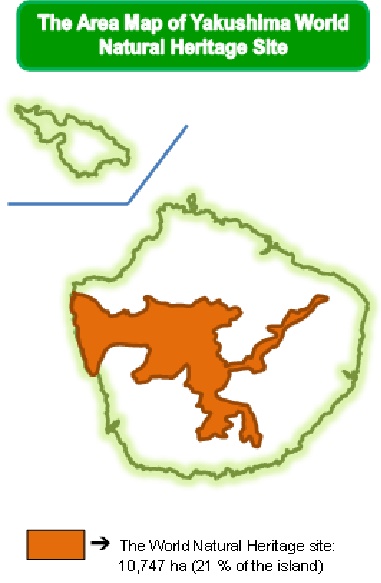
|
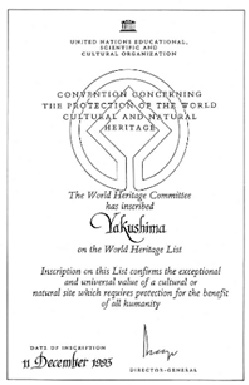
Date of inscription:December 11, 1993. Yakushima, together with Shirakami Mountain range (Akita and Aomori.), were registered as the first World Natural Heritage Site in Japan. |
Evaluation Criteria for Yakushima
☝ Requirements for inscription on the World Natural Heritage List
= Outstanding Universal Value
②The property must fulfill the condition of integrity (e.g. Include all the elements necessary to demonstrate outstanding universal value, contain adequate areas; show little influence of development and maintain its primary natural value.
③The property must be adequately protected and managed in order to maintain its outstanding universal value over the long term.
☝ Evaluation of Yakushima
Among of the evaluation criteria Yakushima meet two of them, ⅶ) Natural beauty and ⅸ) Ecosystem, and also meet ② and ③.
☝ Criterion ⅶ) Natural beauty
◎Yakushima, despite being a southern small island, boasts several key features including impressive mountains which rise to nearly 2000 meters and an outstanding gradient from the high peaks of the central core down to the seacoast.
◎Nature of Yakushima contents a primeval forest composed of over 1000 years old cedar trees. It also presents distinctive forest scenery that has adapted to the high rainfall and highly humid environment, and is unique to Yakushima.
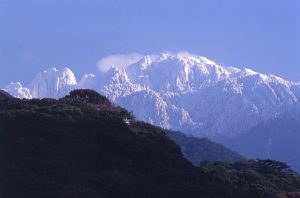
|
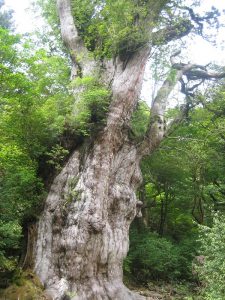
|
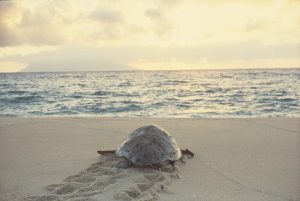
|
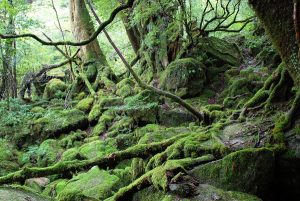
|
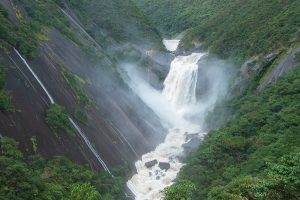
|
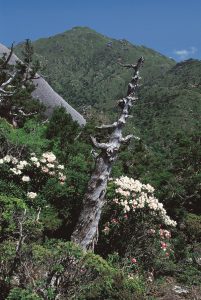
|
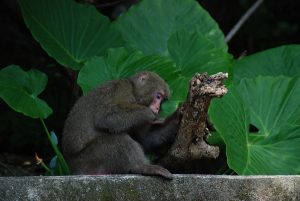
|
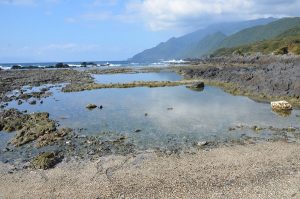
|
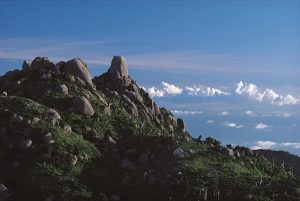
|
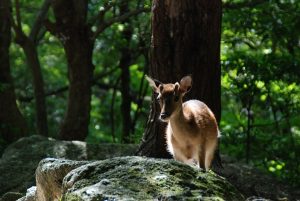
|
☝ Criterion ⅸ) Ecosystem
◎Yakushima is an island ecosystem with mountains over 2000 meters high. It contains primeval forests which extend through an altitudinal sequence from the coast up to the central peaks. Visitors can see distribution of natural vegetation from all parts of Japan on this island. 【The Vertical Distribution of Vegetation】
* The vertical distribution of vegetation of Yakushima is unique. It has over 1,900 varieties of plants and over 80 of them are indigenous to Yakushima. The areas on top of the mountains have many plants indigenous to Yakushima which makes Yakushima unique.
* A wide climatic range can be seen. The temperatures range from a subarctic climate of the high mountains (much like that of Hokkaido – the coldest area of Japan) to a subtropical climate of the coastal areas.
How many UNESCO sites do Yakushima have?

